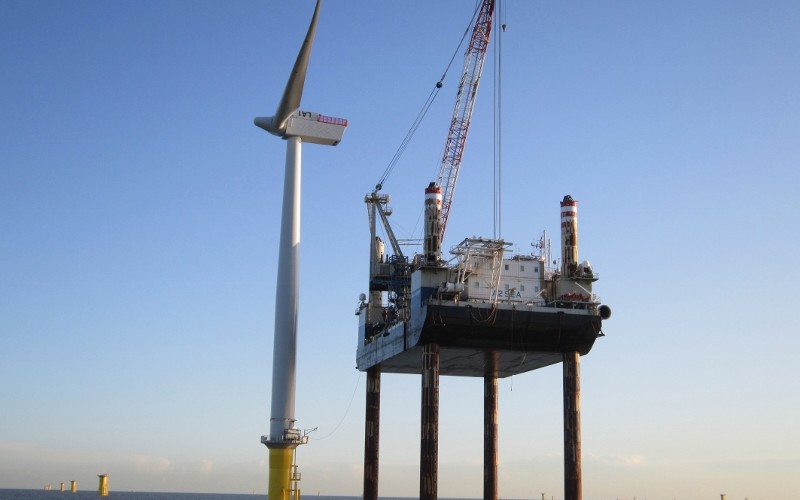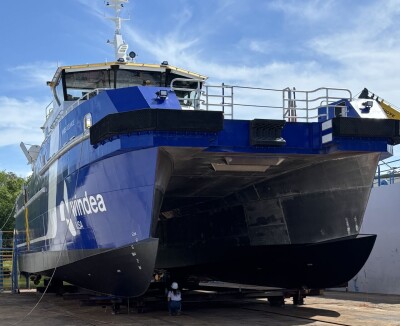Offshore wind energy developers already invested heavily in U.S. Atlantic waters are looking for new power purchase agreements with Northeast states, a quest complicated by uncertainty over the presidential election, the wind industry group Oceantic says in a new report.
“This slowdown comes at a critical time: states have reorganized their project portfolios after rising costs scrambled industry economics and are pushing hard for new offtake agreements,” Oceantic says in its recently published 2024 third quarter report. But the group says “the federal government has hit its stride in permitting advancements and has begun releasing Inflation Reduction Act funding. The market is primed for impressive growth.”
With support from the Biden administration, Northeast state governments and a determined permitting drive by the federal Bureau of Ocean Energy Management, BOEM has issued permits in various stages for 10 projects, according to the Oceantic report.
The group’s optimistic outlook came out just before a lackluster BOEM lease auction in the deepwater Gulf of Maine that drew $21.9 million in bids for four out of nine tracts offered. The prospects for developing arrays of floating wind turbines in the Northeast U.S. still depend on future development of suitable ports, infrastructure and technology.
On the outer continental shelf of southern New England, Vineyard Wind and turbine manufacturer GE Vernova are still recovering from the July 13 failure that shattered a blade on one turbine, requiring extensive testing, analysis and ongoing inspection and replacement of some blades on the project.
All U.S. offshore wind projects could hinge on the outcome of the election, with Democratic Vice President Kamala Harris committed to renewable energy goals, and Republican former president Donald Trump promising to scuttle wind energy if he is returned to office.
The Oceantic report takes an upbeat tone. “Major construction of new deep-water ports and transmission projects are underway in New England,” the authors wrote. After the industry’s battering by inflation and escalating costs, the report says, “Maryland, New Jersey, New York, and the New England states are each advancing offtake rounds, working to recover canceled agreements while restoring confidence in the industry and securing local economic benefits.”
The next offtake rounds – advance agreements between wind companies and the purchasers of future power supplies – would come at higher prices.
“With the Atlantic Shores South 1 and US Wind projects (off New Jersey and Maryland) proposing new financial terms to their respective state utility boards, the U.S. market is officially transitioning from its first offtake market phase to its second,” the report says.
“Due to global economic instability and cost increases, around 75% of project offtake agreements signed between 2017 and 2022 have been fundamentally altered or terminated,” the report notes. “Many of these projects have found new offtake agreements with their respective states, like Sunrise Wind (924 MW) and Empire Wind 1 (810 MW) in New York, while others wait to re-enter the market. Much of that lost capacity is being made up by new projects that signed offtake agreements post-2023 after prices largely stabilized.”
New England states continued to push the U.S. market with new procurement rounds. The Tri- State procurement round awarded provisional contracts for three offshore wind projects, totaling 2,878 MW — half of the 6,800 MW available.
Massachusetts allocated 2,678 MW to Vineyard Wind 2 (800 MW), SouthCoast Wind (1,087 MW), and New England Wind 1 (791 MW), while Rhode Island awarded 200 MW to SouthCoast Wind. Connecticut delayed making its decision, but backers of Vineyard Wind 2 warned that without Connecticut buying into the remaining 400 MW of its bid, the project’s viability may be at risk.
In New Jersey, the state’s fourth round seeking between 1,200 and 4,000 MW received proposals from four projects.
The bids are expected to include manufacturing commitments, particularly for the EEW-AOS monopile facility in Paulsboro, N.J., the report notes. The factory was originally building foundations for Ørsted’s Ocean Wind project, before Ørsted abruptly cancelled it a year ago..





